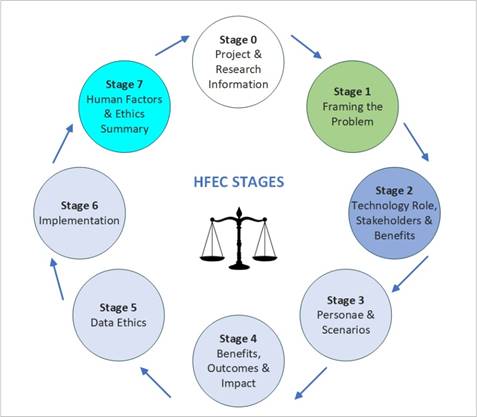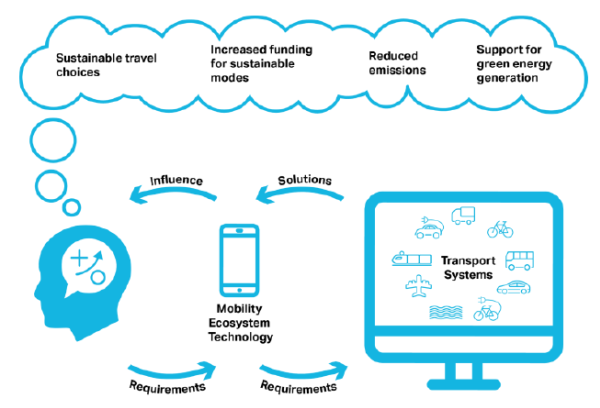Human Performance & Wellness in the Workplace: the Triple Bottom Line
Dr Joan Cahill, Centre for Innovative Human Systems, School of PsychologyArticle by Dr Kate Smyth, Consultancy Development Officer, CONSULT Trinity, Trinity Research and Innovation

Dr Joan Cahill, Centre for Innovative Human Systems, School of Psychology
In recent years, promoting work-life balance has become an essential part of many workplaces in Ireland. According to an article published last year in The Irish Times, “anything that gives a hiring edge is desirable and organisations that don’t ‘do’ well-being are now at a disadvantage when it comes to attracting talent.”
The importance of designing work systems that properly support employee health and well-being is a central part of Dr Joan Cahill’s research at Trinity College Dublin. Dr Cahill focuses on understanding the links between a person’s activity – both inside and outside of work – and how this impacts on wellbeing, human performance and by implication productivity and safety.
Dr Cahill is a Research Fellow in the School of Psychology and has worked as a Senior Researcher and Principal Investigator at Trinity’s Centre for Innovative Human Systems. Having studied philosophy, design and psychology, she is uniquely positioned to explore issues around wellness, human performance, productivity and safety in the workplace. Over the last twenty years, she has worked with various companies and stakeholders across diverse sectors such as aviation, healthcare, transport and financial services.
I sat down with Dr Cahill to chat about her work. She described the importance of ensuring that the person is the central focus, taking a human factors and “systems” perspective to the design of work practices and technologies, and embedding ethics and the assessment of impact into the design and evaluation of emerging technologies.
According to Dr Cahill, “workplace IT systems were historically introduced to promote efficiency. There was insufficient attention to issues around the human role in the system, promoting healthy work and worker wellbeing, enabling worker self-efficacy and augmenting team performance and trust.”
Now, there is a greater emphasis on fostering trust and engagement, the promotion of wellbeing in the workplace (including psychological wellbeing), the avoidance of work-related stress (WRS), burnout and absenteeism, and developing ethically-aligned technologies (and specifically, technologies that prioritize human wellbeing).
According to Dr Cahill, this change is to be valued and considered at an early stage:
“We need to design the work and workplace of the future. Millennial and Generation Z employees are looking for more autonomy and flexibility in work. With the increased adaption of automation in work, and the use of mobile apps and health monitoring technologies (such as Fitbits), work-life balance is starting to mean something more than was traditionally understood.”
So what is healthy work? For Dr Cahill, healthy work is not just the avoidance of harmful work practices, of which she says there are plenty. Here she refers to long working hours, poor management of team conflict, and working in continually high-stress situations. She also refers to the contribution of individuals (and not just employers) to harmful work practices. As Dr Cahill describes, healthy work relates to the creation of positive wellbeing within workplaces and workforces. This concerns a worker’s physical, psychological/emotional and social health (which she terms “the biopsychosocial”), the design of work-practices, workplace technologies and the working environment, the values and attitudes embedded in an organisation’s work culture, and how work design fits to a person’s individual circumstances.
Employees and managers must be educated about boundaries between life inside and outside of work, and managing conflicting demands. As she points out, “we are all part of the problem and part of the solution. We all have a role. Employers along with employees need to understand their role and responsibilities here.”
Dr Cahill argues for a rights-based approach to the design of work and workplace technologies: “Many companies treat workers in terms of enterprise resources. Workers are more than commodities or resources. They are human beings! And there are benefits to designing workplace procedures and technologies with the human in mind. Furthermore, there are benefits to employees and employers for promoting employee self-efficacy and wellbeing.”
Dr Cahill describes her speciality as “human factors.” She considers the ways in which people, processes and technology are interconnected to deliver the right outcomes at different levels (such as, individual, work team or unit, or business level) and how this links with the design of workplace procedures, culture and employee training.
An overarching theme of her work across various projects has been improving the quality of life for employees. Dr Cahill refers to the term “lived experience,” and says that increasingly her research is going back to her roots in philosophy. In particular, she is focussing again on Phenomenology, Ethics and Metaphysics, which involve asking the difficult “why” questions rather than rushing in immediately with the “what” and the “how.”
As a specific example, Dr Cahill describes the “Pilot Lived Experience” Project. This project is all about understanding pilot wellbeing and fitness for duty, taking into account the links between life as it is lived both inside and outside work, and the inter-relationships therein. In modelling this, Dr Cahill refers to the three pillars of a person’s wellbeing – the biological, the psychological and the social – and the relationship between factors both within and across each of these three pillars.
Over the last five years, Dr Cahill has collaborated with Captain Paul Cullen, who is a commercial pilot, human factors researcher and air accident investigator. They have been seeking to understand the determinants of wellbeing (including psychological wellbeing) for pilots and to understand why and how some pilots cope better than others. They are also looking at how to model the life and workplace factors that contribute to positive and negative outcomes for pilots. As noted by Dr Cahill, these factors and outcomes contribute to operational and safety problems, such as absenteeism, flight delays, flight cancellations, near misses and safety events.
Recently, Dr Cahill and Paul Cullen have collaborated with Professor Simon Wilson of Trinity’s School of Statistics & Computer Science, as well as Sohaib Answer (a Data Analytics Expert) and Professor Keith Gaynor of UCD’s Department of Psychology. This collaboration seeks to further advance the statistical and clinical basis of these models, to develop tools to support coping and positive wellbeing for pilots, along with risk assessment practices at an operational and organisational level. As pointed out by Dr Cahill, “we need to consider both individual and organisational resilience.”
According to Dr Cahill, “change is required at different levels. We are looking at behaviour change for pilots, such self management of health, health monitoring, and stress management. Also, we are looking at changing relationships between the individual and employer, including information sharing relationships (for example, sharing information about our personal health, lifestyle and fitness for duty). In many cases, regulation also needs to change and/or catch up. Evidently, such information is sensitive and ethical dimensions such as consent, autonomy and protection of the personal sphere must be considered. These concepts and tools can be applied not just to pilots but also to other shift and remote workers, for example, healthcare workers, first responders, or workers in process industries.”
|
|
|
Biopsychosocial Wellness Indicator (Developed with Oneview Healthcare/Assisted Living) |
||
Dr Cahill is also investigating how “smart work concepts” can be introduced into the design of Robotic Process Automation Systems (RPA). Currently, Dr Cahill is collaborating with Professor Yufei Huang of Trinity’s School of Business, as well as product managers and software developers from Zarion Ltd., to develop a new “Intelligent Work” platform. This will enable work that is healthy, productive, safe and ethical.
Dr Cahill states that the project requires a strong focus on understanding the business need, healthy teamwork, customer service and societal impacts. She notes that the impact of new working practices and trends presents both risks and opportunities. These new working practices and trends incorporate the blended workforce (i.e. a mix of human and intelligent agents), the flexible workforce (relating to virtual or remote work, the gig economy, or work teams with varied contracts), new IT-enabling workforce analytics, surveillance in work, and workflow orchestration and management.
According to Dr Cahill, there is a strong human and moral imperative, along with a business case, to move towards “responsible work” concepts. Companies have a responsibility to their employees, shareholders and to society. Here, Cahill refers to the tripartite labour collaboration: “Societal impacts are often overlooked. This is not very future-focussed.”
Dr Cahill situates her innovative approach to RPA and intelligent work in terms of the “triple bottom line.” This refers to the idea that “all our activity must deliver societal, economic and environmental benefits. Work system design therefore needs to mediate these different perspectives.” Dr Cahill argues that these perspectives can be jointly optimised, if we take work design and its impacts seriously.
I asked Dr Cahill about her work in relation to the “Human Factors & Ethics Canvas,” which she developed and implemented while working on several projects concerning emerging technologies. As she points out, designers, consumers and the community have responsibilities for the technologies that are created. The use and potential impact of emerging technologies raises many interrelated questions pertaining to ethics and societal values. The “Human Factors & Ethics Canvas” is a tool or methodology which enables the active translation of ethical issues pertaining to the human and social dimensions of new technologies into ethically responsible solutions.
Dr Cahill looks at how a consideration of ethics and ethical approaches can lead to better impacts at different levels. Her training in philosophy and behaviour science is combined with her understanding of technology through an ontological design approach. Ontology relates to the nature of being for humans, and ontological design relates to what we have created as humans, our engagement with the world around us. Within this, she says, is the notion of the “triple bottom line”: the environment, social factors, and economic goals.
Taking an ethical approach means framing research questions appropriately, properly understanding the problem space, engaging with stakeholders, and assessing potential benefits and problems – even the unknowns. Ethical principles should be embedded in design practices early in the planning stages. Drawing up an ethical framework at the start of a project can assist with this and avoid researcher bias or the drive for commercial success based on an assumption of what stakeholders want, rather than engaging with them and asking questions. As Dr Cahill notes, “thinking about potential positive, negative and unintended consequences enables designers to build in protections into the design concept.”

Stages in the Human Factors & Ethics Canvas
For more, see: https://www.tcd.ie/cihs/projects/hfaecanvas.php
Workplace technology can have far-reaching impacts. Dr Cahill is also working with Professor Sam Cromie from the School of Psychology, Professor Brian Caufield from the School of Engineering and Shane Dunny from AECOM on the SFI-funded SMILE project, which relates to transport decisions for companies and their employees.
Taking into consideration multiple issues, such as climate change and the drive for a more sustainable and healthy society, this project looks at how companies can encourage remote working, the use of public transport, the use of e-bikes and the adoption of e-cars. However, allowing employees to work from home means a certain level of trust from employers. Pressure can be put on employees to be “seen” to be working, and companies can incorporate forms of surveillance into this. This should be implemented with diverse perspectives in mind, and driven by an ethical agenda. Furthermore, as Dr Cahill says, in order to design technology which nudges workers towards eco travel decisions, we first need to understand the interactions between different elements of the transport ecosystem: the individual, workplace/work systems design, the design of communities, transport design and the institutional level.

SMILE Ecosystem
For more, see: https://www.tcd.ie/cihs/projects/smile.php
Improved working environments necessitate a behaviour change both on the part of employers and employees. As argued by Dr Cahill, this means changing how we conceptualize work and how we design systems to promote wellness, safety and productivity: “We need to move beyond a focus on productivity and efficiency. We need to look at harnessing new technologies to augment human wellbeing and human performance.”
Dr Cahill cautions that the design of ethically-aligned workplace systems that deliver benefits across the triple bottom line requires teams with diverse skills. This includes Computer Science, Health Science, Design, Environmental Science, Machine Learning and AI, Human Factors, Ethics, Behaviour Science, Business Analysis and Organisational Change. There are great benefits for companies to work with research teams at Trinity, where the Trinity Research and Innovation (TR&I) team can assist in the creation of bespoke research teams to target the specific research problem and skills-set required.
Soon, work planning, work performance and health data will be used by individuals to self-regulate their own work, to improve their health and their performance in work, to manage risk and to deliver business benefits. According to Dr Cahill, “this may be linked to workplace operations management, health monitoring and risk and safety assessment systems. Of course, data analytics and artificial intelligence (AI) will play a big role in this. The future is quite exciting.”

